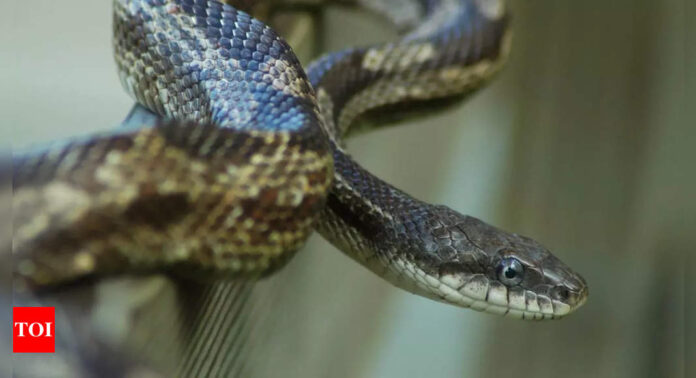Natural history and folklore combine in an interesting way in the tale of the snake that climbs up cows’ legs to get at their milk. This story has been passed down through the years, especially in India’s rural areas, where it is frequently told with a mixture of caution and wonder.
The Indian rat snake (Ptyas mucosa), a widespread species across the Indian subcontinent, is the main focus of the folklore.These snakes are renowned for their dexterity and capacity to scale buildings and trees. According to legend, these snakes would cling to cows’ legs and sip their milk straight from the udder when they were hungry or thirsty. The cows are known to exhibit this behaviour most often in the early morning or late evening when they are relaxed and grazing in the fields.
So, what’s true or mythical?
Experts in wildlife and herpetology have mostly disproved this notion. Snakes lack the physiological ability to nurse, including the Indian rat snake. Their main sources of food are tiny animals such as birds and rodents. The idea probably started when people saw snakes occasionally near livestock. This could be because snakes chase rodents, which are frequently found in stables and barns.
In many rural communities, the narrative endures despite scientific answers. It’s frequently told as a warning story to keep kids away from snakes and to make farmers more watchful. A sense of mystery and the unknown are powerfully evoked by the image of a snake clinging to a cow’s leg.
The physiological capacity for a snake to nurse from a cow’s teat is absent. They also don’t consume cow’s milk. via Canva
The story has become more supernatural in certain parts of the world. There are legends of snakes possessing magical abilities that, depending on how they are handled, can either bring good fortune or calamity. These legends are further complicated by the fact that they are frequently entwined with regional beliefs and practices.
This myth’s enduring popularity serves as a testament to rural India’s rich storytelling heritage. It illustrates how closely people and animals are bonded in these communities, where livestock is an integral part of day-to-day existence. A story that never ceases to enthral and fascinate unites the snake and the cow, two seemingly unrelated creatures. Even if there’s a clear explanation from modern science, the myth nevertheless has an appeal. It serves as a reminder of the influence folklore has on our perception of the natural world.

